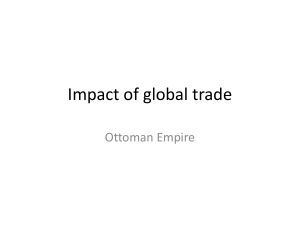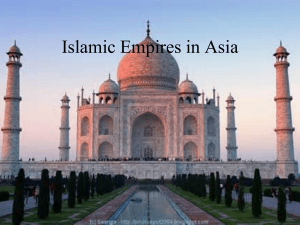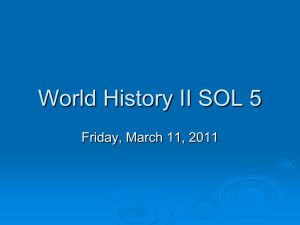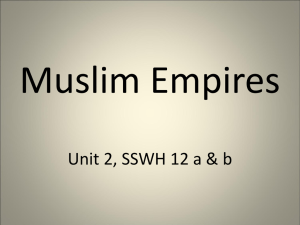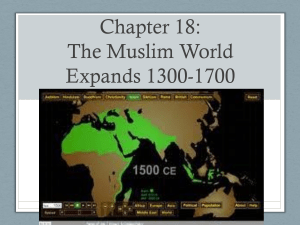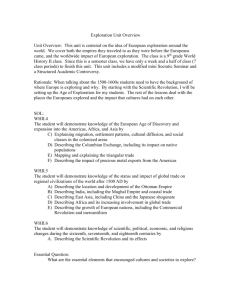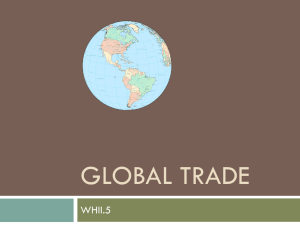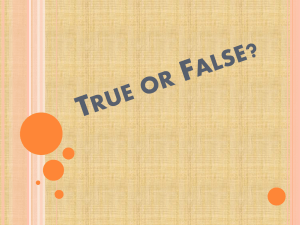Global Trade After 1500
advertisement
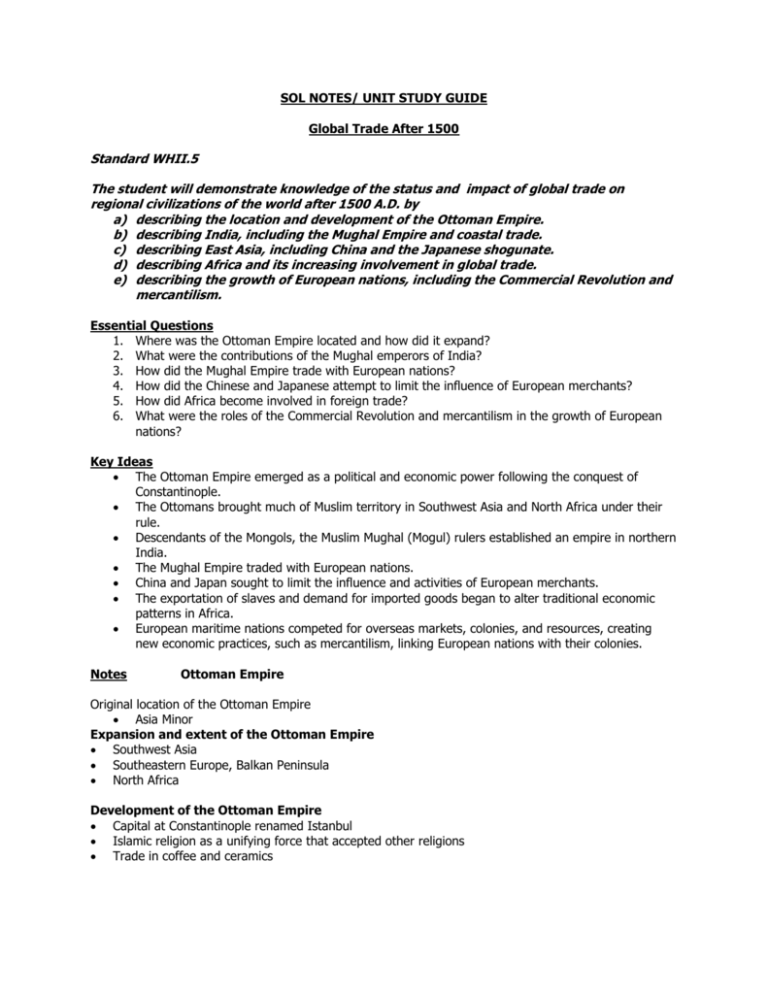
SOL NOTES/ UNIT STUDY GUIDE Global Trade After 1500 Standard WHII.5 The student will demonstrate knowledge of the status and impact of global trade on regional civilizations of the world after 1500 A.D. by a) describing the location and development of the Ottoman Empire. b) describing India, including the Mughal Empire and coastal trade. c) describing East Asia, including China and the Japanese shogunate. d) describing Africa and its increasing involvement in global trade. e) describing the growth of European nations, including the Commercial Revolution and mercantilism. Essential Questions 1. Where was the Ottoman Empire located and how did it expand? 2. What were the contributions of the Mughal emperors of India? 3. How did the Mughal Empire trade with European nations? 4. How did the Chinese and Japanese attempt to limit the influence of European merchants? 5. How did Africa become involved in foreign trade? 6. What were the roles of the Commercial Revolution and mercantilism in the growth of European nations? Key Ideas The Ottoman Empire emerged as a political and economic power following the conquest of Constantinople. The Ottomans brought much of Muslim territory in Southwest Asia and North Africa under their rule. Descendants of the Mongols, the Muslim Mughal (Mogul) rulers established an empire in northern India. The Mughal Empire traded with European nations. China and Japan sought to limit the influence and activities of European merchants. The exportation of slaves and demand for imported goods began to alter traditional economic patterns in Africa. European maritime nations competed for overseas markets, colonies, and resources, creating new economic practices, such as mercantilism, linking European nations with their colonies. Notes Ottoman Empire Original location of the Ottoman Empire Asia Minor Expansion and extent of the Ottoman Empire Southwest Asia Southeastern Europe, Balkan Peninsula North Africa Development of the Ottoman Empire Capital at Constantinople renamed Istanbul Islamic religion as a unifying force that accepted other religions Trade in coffee and ceramics Notes Mughal Empire Location of the Mughal Empire North India Contributions of Mughal rulers Spread of Islam into India Art and architecture—Taj Mahal Arrival of European trading outposts Influence of Indian textiles on British textile industry Trade with European nations Portugal, England, and the Netherlands competed for the Indian Ocean trade by establishing Coastal ports on the Indian sub-continent. Notes China and Japan China Creation of foreign enclaves to control trade Imperial policy of controlling foreign influences and trade Increase in European demand for Chinese goods (tea, porcelain) Japan Characterized by powerless emperor ruled by military leader (shogun) Adopted policy of isolation to limit foreign influences Notes Africa African exports Slaves (triangular trade) Raw materials African imports Manufactured goods from Europe, Asia, and the Americas New food products (corn, peanuts) Notes Europe Terms to know Mercantilism: An economic practice adopted by European colonial powers in an effort to become selfsufficient; based on the theory that colonies existed for the benefit of the mother country Commercial Revolution European maritime nations competed for overseas markets, colonies, and resources. A new economic system emerged. – New money and banking systems were created. – Economic practices such as mercantilism evolved. Colonial economies were limited by the economic needs of the mother country.

